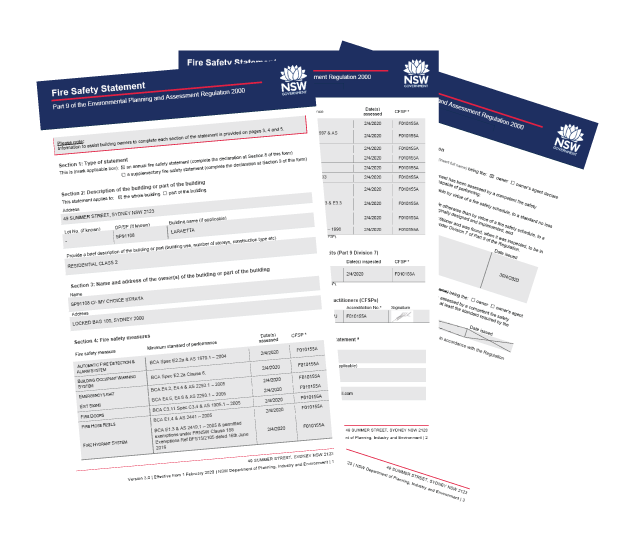If you’re a building owner, manager, or strata committee member in New South Wales, you’re probably familiar with the Annual Fire Safety Statement (AFSS) — a legal requirement that certifies your building’s fire safety measures have been assessed, tested, and are working as required.
But what many property owners don’t realise is how much easier and less stressful AFSS compliance becomes when you commit to regular fire system maintenance throughout the year.
What Is an AFSS?
An Annual Fire Safety Statement (AFSS) is a mandatory document submitted to your local council and Fire and Rescue NSW. It confirms that all essential fire safety measures (like sprinklers, smoke alarms, extinguishers, fire doors, exit signs, etc.) in your building have been inspected and certified as compliant by an Accredited Practitioner (Fire Safety).
The AFSS must be submitted annually, and failure to comply can lead to fines, legal action, and even closure orders.
Why Regular Fire System Maintenance Matters
Submitting an AFSS isn’t just about ticking a box once a year — it requires real, provable compliance. And that’s where routine maintenance comes in.
Here’s why:
1. Avoid Last-Minute Surprises
If fire systems aren’t serviced regularly, faults and failures may go undetected until it’s time for the annual assessment. Last-minute fixes can be costly, or worse — your building may fail the inspection entirely.
With regular maintenance: Issues are caught early and corrected before they become a problem during AFSS season.
2. Ensure System Reliability
Systems like fire pumps, emergency lighting, and sprinkler heads need to function properly at all times — especially during a fire emergency. Routine checks ensure these systems are not only compliant but also ready to save lives.
3. Keep Accurate Records
Accredited Practitioners need evidence that systems have been maintained in line with AS 1851 and other relevant standards. Regular servicing creates a trail of documentation that simplifies your AFSS preparation.
4. Meet Legal & Insurance Requirements
Insurers often require evidence of ongoing maintenance. A well-documented service history can help in the event of a claim or legal dispute — and ensure you’re not held liable for system failures.
What Does Regular Maintenance Involve?
Depending on your building and systems, maintenance can include:
- Monthly visual checks of extinguishers and fire doors
- Quarterly testing of alarms and sprinklers
- Six-monthly service of emergency and exit lighting
- Annual inspection of fire hydrants, pumps, and detection systems
- Detailed record-keeping for each system and service event
A qualified fire protection provider (like Control Fire Protection) can handle this for you with scheduled service plans that keep your property in peak compliance year-round.
Submitting Your AFSS: A Smoother Process
When your systems are up-to-date and professionally maintained:
- Your Accredited Practitioner can complete assessments quickly
- You can submit your AFSS on time, without panic
- You reduce the risk of non-compliance fines or council notices
- Your building’s occupants are safer and better protected
AFSS compliance doesn’t have to be a headache — not when regular fire system maintenance is part of your building’s routine care. By staying on top of your fire safety responsibilities all year round, you’ll ensure a seamless submission process, safer occupants, and peace of mind.
Need Help with Fire System Maintenance?
At Control Fire Protection, we specialise in scheduled maintenance, testing, and certification of essential fire safety systems — helping building owners across NSW stay compliant, protected, and stress-free when it comes to AFSS submissions.
Get in touch today to book a service or set up a maintenance plan tailored to your property.

Recent Comments